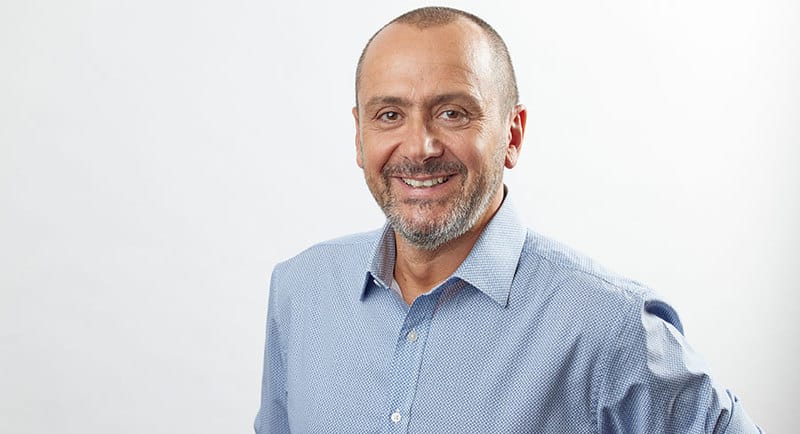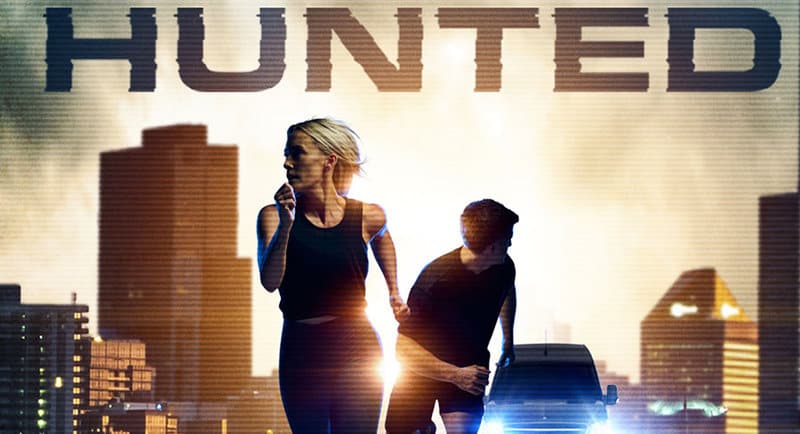Channel 10 will be bringing one of the most daring TV formats in the world to Aussie screens on Sunday, July 17, when the first local rendition of Hunted premiers.
In the new series, nine pairs of ordinary Australians will become fugitives and attempt to disappear without a trace with a team of elite investigators in pursuit. With limited funds and resources, the fugitives must think of ways to survive and remain undetected on the run for 21 days, for the chance to win a share of $100,000 in prize money.
Mediaweek spoke to Marty Benson, director of content, Melbourne, Endemol Shine Australia, and Tamar Hovagimian, partnership director effect, Paramount ANZ, to talk about how 10 brought this unique format to local screens.
Why did 10 decide to launch Hunted?
Benson said that this new series has been years in the making, with 10 being the station brave enough to take the plunge.
“We’ve been trying to sell it to Australia for years. 10 has suddenly realised that it was time for them to take a gamble and go for it. We’ve been trying to sell this format in Australia for quite some time. Many years.
“I’ve worked in this industry for 25 years, and this is the most exciting content I’ve ever made. This is a real-life thriller. It is fascinating because I was seeing everything that was going on from the Hunter’s point of view, but I wasn’t seeing anything of the fugitives while filming. To bring it together and get the full picture, it’s just fascinating.”
How the show was filmed
When asked how the production team were able to film the show without giving away the location of the contestants, Benson said that it was due to having an embedded director or producer with the teams.
“The fugitives had one person with them the whole time. That person is an embedded producer/director. That person films and asks them questions. They are the third wheel, so if they ask strangers for a lift they have to have room in the car for three of them, otherwise they can’t take them.
“They use a small but pretty good quality handycam with this rustic on-the-run feel to them. A lot of people say to me, how can you hide it if there is a whole camera crew with them? There’s not a whole camera crew with them, there is one person running around, behind them most of the time.”

Marty Benson
When asked what preparation went into this Australian first production, Benson said that there was a series of rehearsals before the show was filmed.
“We had two weeks of rehearsals. We had fake fugitives running around and got all our systems up in place. When we actually started the hunt, the embedded producers and directors knew exactly what they had to do.”
The series takes place in Victoria, with the fugitives dropped off in Federation Square in Melbourne, which Benson said was made easier by the show’s partnership with Visit Victoria.
“They partnered with us, which is fantastic. It just made life a lot easier. The whole of Victoria is going to be seen over these nine episodes, I’m sure they’re going to be delighted. Simple things like we knew that we wanted to do the start from Federation Square because it felt like a great starting point. When you go to Fed Square with the people from Visit Victoria they just open their arms and say come in, what do you need?”
How 10 monetised the format
Hovagimian said that while new and untried formats are always a challenge from a commercial point of view, particularly in a show where there is no script, set, or established faces, that 10 was able to create strong brand exposure both inside and outside Hunted.
“Marty Benson and his team have always approached integration authentically and seamlessly, but this rings even more true in a show like Hunted. We didn’t want to be impacting the fugitives’ course or the hunters’ strategy. You will see that there is strong brand exposure in the program, but we can also be really clever creatively outside of the program – leveraging our broader commercial ecosystem such as 10 Play.”

Tamar Hovagimian
Hovagimian also said that 10 offered authentic integration in Hunted which was supported with commercial assets that included integrated billboards, program IDs, throws, and themed TVCs.
“We’re constantly developing new and engaging assets for brands to show up differently within the content and in the ad breaks. The broadcast experience can be replicated across BVOD through 10 Play’s suite of premium ad products such as Premium Pause, Countdown and Content Carousel to provide really exciting opportunities for brands.
“The Effect team works very closely with our clients, production companies and our in-house creative unit, Imagine, to develop really innovative opportunities to compliment key themes, scenes or format beats. We are well-versed in creating premium, authentic and complementary brand integrations and sponsorship opportunities for our clients.”
When asked how Hunted, compares to 10’s other major entertainment properties in commercial offerings, Hovagimian said that the integration opportunities are different to a show like MasterChef or I’m A Celebrity… Get Me Out Of Here! based on the unpredictability of the content.
“We don’t know what products our fugitives will use to escape a situation, we don’t know what they will eat, wear or talk about.
“Our commercial opportunities are similar to other shows but the strongest opportunities with Hunted are the creative ways brands can align to the content around the show.
There are strong brand alignment opportunities across tech, digital, auto, banking, QSR, food delivery, vitamins, fitness, etc, but a show like this provides scope for really unpredictable brand alignment too.”
How the game was played behind the scenes
Benson said that the utmost efforts were made to make the game as realistic and fair as possible.
“For every fugitive and embedded producer or director, there’s also a forward team and the forward team is getting all the CCTV footage as we go. They are also sending back all the data and information from the fugitive’s actions, for example, that they just got into a white car, it is a Toyota, and the rego is such and such.
“Every team has got a special data wrangler that is compiling a database of every single move. When the hunters request information such as CCTV footage, then that will be with that specific data wrangler. It is a really complicated process but within two minutes of somebody taking money out of an ATM machine, for example, we have replicated the CCTV footage and then sent it off via WhatsApp and then the hunters can request this information after getting a ping on the person’s card.”
“The referee who sits between the fugitives and the hunters is the former Victoria Police Detective Inspector, Ken Ashworth. He would say that in real-time, the police would get it in 15 minutes, so we would wait 15 minutes and then we would send it off. He was to oversee the whole hunt ad make sure that everything was fair.”
The production teams were even separated, to keep the game as fair as possible, which Benson said was a big task.
“It is like having two productions at once, and you have to be on top of both of them at the very same time. We actually separated the production office for the fugitives from the HQ site. Anyone that worked on the hunter side had no comms with anyone that worked on the fugitive side. They have no idea who these people were, and they had no idea what their emails were, or what information was coming or going.”
With this format, producers are at risk of the show ending before it even truly begins if the hunters capture all the fugitives in quick order, an outcome that Benson admitted had him absolutely petrified.
“The hunters want to catch the fugitives, I believe more than the fugitives want to make it to the end. The hunters have their reputations at stake. They are legitimate and credible investigators, cyber experts, police, army, and British Intelligence. The only thing that gave me hope that we would last the amount of time was that nowhere in the world do you see a crack team of detectives chasing down 18 fugitives all at once. I was told by David Craig, the chief, that normally you have a team of about 100-150, chasing one fugitive. They started catching people relatively quickly as you’ll see from the first episode.”
How they selected the fugitives
When asked how they picked the fugitives for the inaugural season of the show, Benson said that they were looking for a good diverse range of people.
“We needed to find people from every state, that’s very important to Network 10 that we cover almost all of Australia. On top of that, we needed something different, we couldn’t have all couples, that would be boring. We wanted to make sure that we covered all bases. It was also people that we find interesting. They are going into this blind, They all saw the UK show but the fact that it has never been on in Australia before, I thought most of the people that applied could do it. It is just ordinary people, to be honest.”
